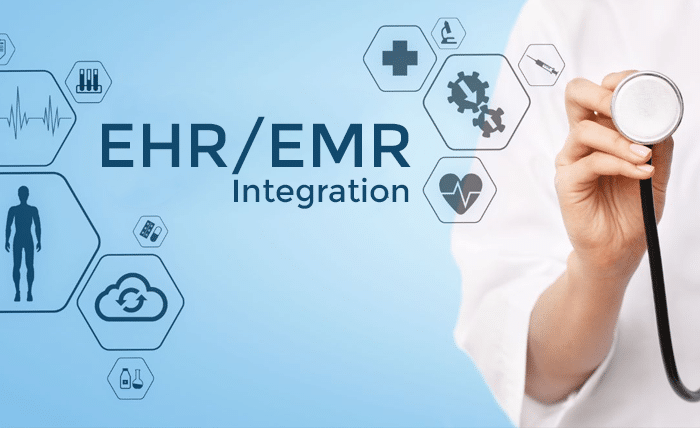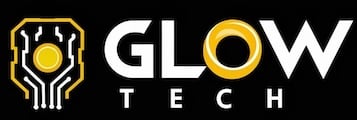
In the fast-paced world of healthcare, seamlessly integrating Electronic Health Records (EHR) and Electronic Medical Records (EMR) systems is essential—it’s not just a necessity but a transformative solution. Effective integration streamlines operations, enhances patient care, and significantly boosts revenue for healthcare providers. However, the journey to successful integration presents several challenges.
In this blog, we uncover the top five EHR/EMR integration challenges and share practical strategies to overcome them, featuring expert insights from InstaPract, a leader in healthcare technology innovation.
Introduction to EHR and EMR Integration
In today’s digital landscape, healthcare providers increasingly adopt EHR and EMR systems to streamline patient care. As more facilities embrace these technologies, achieving effective integration becomes a top priority.
EHRs serve as comprehensive digital records of a patient’s health information, accessible across various healthcare settings. By consolidating data from multiple providers, EHRs enable seamless sharing and improve care coordination.
On the other hand, EMRs focus on managing medical records within a specific practice or organization. While EMRs help individual physicians track patient histories, they lack the interoperability that EHRs provide.
Why Integrate EHR Systems?
Integrating EHR systems offers numerous benefits:
- Improved Patient Care: Unified EHR systems provide comprehensive patient information, enabling better-informed clinical decisions and improved outcomes.
- Enhanced Data Sharing: Integration facilitates secure, efficient data exchange among healthcare providers, ensuring continuity of care.
- Increased Efficiency: Streamlined workflows reduce administrative burdens, allowing healthcare professionals to focus on patients instead of paperwork.
- Regulatory Compliance: Integrated systems help organizations meet regulations like HIPAA by ensuring secure and accurate data management.
- Telehealth Integration: Seamless integration supports virtual consultations and remote patient monitoring, enhancing patient engagement. The rise of telehealth services drives EHR integration, enabling seamless virtual consultations and remote patient monitoring to enhance patient engagement.
- Increased Revenue: By minimizing errors, reducing redundancies, and improving efficiency, EHR integration optimizes resource utilization and boosts financial performance.
Practical Solutions to Overcome EHR/EMR Integration Challenges
Discover the top 5 EHR/EMR integration challenges and practical strategies to address them effectively
1. Data Migration
Challenge: Transferring patient data from legacy systems to new EHR/EMR platforms is complex due to varying data formats and interoperability issues.
Solutions:
- Standardize Data Formats: Use industry standards like HL7 and FHIR to ensure compatibility and smooth data exchange.
- Leverage Data Mapping Tools: Employ advanced tools to map data accurately between old and new systems, minimizing errors.
- Conduct Data Audits: Review and clean legacy data to eliminate redundancies and inaccuracies before migration.
- Engage Integration Experts: Partner with specialists experienced in handling complex data migrations to ensure precision and efficiency.
- Test in Stages: Perform staged testing to identify and resolve issues early, ensuring a smooth transition.
- Cost of Integration
Challenge: Integration involves significant costs for software, hardware, training, and ongoing support.
Solutions:
- Create a Detailed Budget: Outline all potential expenses, including hidden costs like post-implementation support.
- Seek Scalable Solutions: Invest in systems that can grow with your organization, reducing the need for future overhauls.
- Use Cloud-Based EHR Systems: Cloud solutions often lower upfront costs and reduce hardware investments.
- Apply for Grants or Incentives: Explore government programs or incentives aimed at promoting EHR adoption and integration.
- Negotiate Contracts: Work with vendors to negotiate pricing or explore bundled service packages for cost savings.
- Resistance to Change
Challenge: Staff resistance to new technology can lead to low engagement and errors during the transition phase.
Solutions:
- Involve Staff Early: Include key stakeholders in the decision-making and planning process to foster ownership.
- Provide Comprehensive Training: Offer role-specific training sessions and hands-on practice to build confidence in using the new system.
- Communicate Benefits Clearly: Highlight how the integration improves patient care, reduces workloads, and enhances efficiency.
- Appoint Change Champions: Identify tech-savvy staff members to serve as ambassadors, helping others adapt to the new system.
- Offer Continuous Support: Establish a helpdesk or dedicated support team to address staff concerns during and after implementation.
- Data Security Concerns
Challenge: Integration raises the risk of data breaches, compromising sensitive patient information.
Solutions:
- Adopt Advanced Security Protocols: Use encryption, multi-factor authentication, and intrusion detection systems to protect data.
- Ensure Compliance: Align your integration process with HIPAA and other regulatory requirements to safeguard patient information.
- Limit Access Rights: Implement role-based access controls to restrict data access to authorized personnel only.
- Conduct Security Audits: Regularly review and update security measures to address emerging threats.
- Train Staff on Cybersecurity: Educate staff about best practices for data protection, including phishing and password management.
- Complexity of Implementation
Challenge: Technical complexity, especially in outdated infrastructures, can lead to delays and disruptions.
Solutions:
- Perform Infrastructure Assessments: Evaluate existing systems and upgrade hardware or software as necessary before integration.
- Choose Modular Systems: Opt for EHR/EMR platforms that allow phased implementation to reduce disruption.
- Collaborate with Experts: Work with experienced integration partners who can troubleshoot and streamline the process.
- Develop a Clear Implementation Plan: Create a step-by-step roadmap, including timelines, milestones, and contingency plans.
- Monitor Progress Continuously: Use project management tools to track progress and address bottlenecks in real time.
Choosing the Right Integration Partner
Selecting the right partner is crucial for a successful EHR/EMR integration. Consider these tips:
- Identify Needs: Define your organization’s goals to find a suitable partner.
- Prioritize Experience: Choose a partner with a proven track record, like InstaPract, which specializes in tailored healthcare solutions.
- Look for Customization: Ensure the partner can adapt solutions to your organization’s unique requirements.
- Ensure Ongoing Support: Opt for partners offering training and long-term support.
- Verify Security Standards: Confirm the partner’s adherence to data security protocols.
Why Choose InstaPract for EHR Integration?
Finding reliable vendors for EHR integration can be daunting, but InstaPract stands out as a trusted provider. With extensive experience, InstaPract delivers seamless, secure, and customized solutions tailored to healthcare providers’ needs.
The team prioritizes compliance with strict standards like HIPAA and employs advanced encryption methods to safeguard patient data. By focusing on interoperability and compatibility, InstaPract minimizes workflow disruptions, enabling healthcare organizations to maintain efficiency and deliver quality care.




